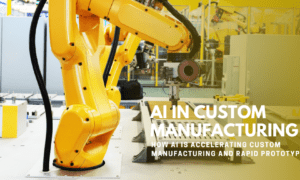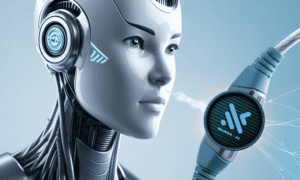Embrace the future of translation! In our increasingly interconnected world, efficiently and accurately bridging language gaps has gained unprecedented importance. Enter the realm of machine learning and artificial intelligence (AI) – two groundbreaking technologies poised to redefine the translation landscape. Yet, do they genuinely stand as game-changers or are they merely trendy concepts in the midst of technological advancements? Join us as we delve into this captivating discourse, exploring how these cutting-edge tools are transforming cross-lingual communication. Prepare for an enlightening expedition where we uncover the potential impact, obstacles, and opportunities brought about by machine learning and AI in the field of translation.
Introduction
Unveiling Machine Learning and Artificial Intelligence
The domains of artificial intelligence (AI) and machine learning (ML) currently dominate discussions within the translation industry. But what do these terms precisely entail? And what effects are they generating in the realm of translation?
In this blog post, we shall delve into the definitions of AI and ML, their application in translation, and their alignment with expectations.
So, what precisely is AI? AI refers to the process of instructing computers to perform tasks that would typically necessitate human intelligence, such as comprehending natural language and identifying patterns.
Conversely, ML operates as a subset of AI, concentrating on training computers to learn from data. This learning can occur through supervised or unsupervised techniques. In supervised learning, computers are provided with a set of training data (marked instances of correct inputs and corresponding outputs), enabling them to develop functions capable of mapping novel inputs to accurate outputs. In unsupervised learning, computers are given unlabeled data and tasked with deriving meaningful patterns from it.
Having established the definitions of AI and ML, let’s explore their application in translation. One of the most promising manifestations of AI in translation is neural machine translation (NMT). NMT, a type of ML, employs artificial neural networks (ANNs) for textual translation. ANNs replicate brain functions and are designed to emulate human learning processes.
NMT systems are trained using extensive parallel text datasets in various languages, facilitating the automatic translation of text from one language to another. Moreover, NMT systems enhance their proficiency over time, with increased data input leading to heightened translation accuracy.
AI and ML stand as captivating domains with remarkable potential for enhancing translation quality. By leveraging NMT systems, translators can significantly reduce their workload while concurrently producing superior translations.
Transformation of the Translation Landscape through ML and AI
The ascendancy of machine learning (ML) and artificial intelligence (AI) has ushered in transformative changes for the translation landscape. These technologies have expedited translation processes while enhancing accuracy like never before.
Nonetheless, not all translation professionals view these changes with equal enthusiasm. Some harbor concerns that ML and AI could ultimately supplant human translators. Others hold that these technologies can merely complement human translation, rather than replace it entirely.
Irrespective of perspective, the undeniable truth remains that ML and AI are reshaping the translation landscape. As with any paradigm shift, this new reality presents both merits and demerits.
Advantages and Drawbacks of ML and AI in Translation
The potential benefits of integrating machine learning (ML) and artificial intelligence (AI) into translation processes are substantial. Automation yields time and cost savings for businesses, concurrently enhancing precision and efficiency. Furthermore, ML and AI contribute to error identification, ensuring the release of exclusively high-quality content.
However, potential drawbacks accompany the use of ML and AI in translation. An apprehension is that these technologies are still evolving and might struggle to generate accurate translations for all content types. Additionally, concerns arise regarding the nuanced understanding and contextual grasp that human translators offer, which automated systems might lack. Lastly, there exists trepidation that ML and AI could introduce bias into translations, depending on the data employed to train the machine learning algorithms.
Comparing the Accuracy of Machine Translations to Human Translations
Determining the accuracy superiority between machine translations and human translations proves inconclusive. Both approaches bear strengths and limitations.
Machine translations excel in grammatical accuracy and spelling due to their rule-based algorithmic nature. However, they can sometimes falter in capturing nuances and comprehending text meaning as adeptly as human translators.
Human translators, in contrast, often excel in preserving text meaning and context. Their cognitive grasp enables a deeper comprehension that machines struggle to emulate. Nevertheless, human translators might occasionally err in grammar and spelling.
Ultimately, the veracity of translation type accuracy lies with the individual translator. Instances exist where machine translations outperform human translations and vice versa.
Cost Analysis: Machine vs. Human Translations
Comparing the costs of machine translation with human translation reveals a substantial disparity. Machine translation is often cost-free, whereas human translation entails financial expenditure.
This cost differential primarily stems from the velocity of machine translation, which significantly surpasses human capabilities. Machines can translate documents within seconds, a feat that humans would require hours or even days to accomplish.
Furthermore, the accuracy factor influences costs. While machine translation has progressed and can generate quite accurate translations, human translators remain supreme in contexts demanding utmost precision.
Hence, the optimal choice hinges on specific needs. When rapidity is crucial and precision is flexible, machine translation serves as a suitable choice. For high-caliber, contextually nuanced translations, human translators remain essential.
Reshaping the Localization Industry
The ascendance of machine learning (ML) and artificial intelligence (AI) within the translation sector constitutes a transformative phenomenon. These technologies have redefined the modus operandi of localization professionals, a trend poised to continue evolving.
Among the most discernible impacts of ML and AI on localization is elevated efficiency and productivity. Translators can now tackle tasks that were once time-intensive, such as repetitive search-and-replace actions or crafting multilingual glossaries. Additionally, machine translation (MT) engines empowered by ML and AI have undergone substantial accuracy enhancement, empowering human translators to engage in more intricate endeavors.
A consequential consequence of ML and AI in localization is cost-effectiveness. The increasing accuracy of MT engines permits their deployment across a broader spectrum of projects, driving notable cost savings for localization teams. They can now embrace MT for a portion or the entirety of their translation tasks.
Collaboration dynamics within localization teams have also undergone transformation due to ML and AI. These technologies facilitate seamless remote collaboration, allowing translators to collectively work on files in real time, irrespective of geographical distance. This newfound convenience has streamlined interactions with freelancers and external collaborators.
Furthermore, ML and AI have contributed to the emergence of innovative localization tools. Some harness machine learning to propose content-enriching suggestions, while others leverage natural language processing to enhance translation accuracy. As these tools advance, the localization industry will experience continued revolution.
Conclusion
The realm of Machine Learning and Artificial Intelligence in translation has progressed significantly, yet whether these technologies can supplant human translators entirely remains uncertain. Undoubtedly, they enhance accuracy and accelerate processes, yet their capacity to capture nuances and context trails behind that of trained translators. This limitation could restrict their application in specific scenarios. Nonetheless, the perpetual development of these technologies is certain, and the challenge lies in optimizing their utilization.”



































